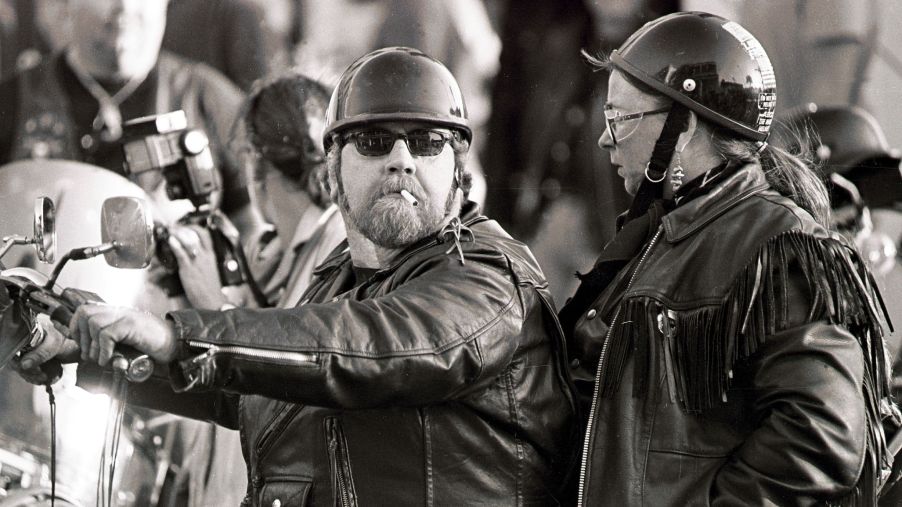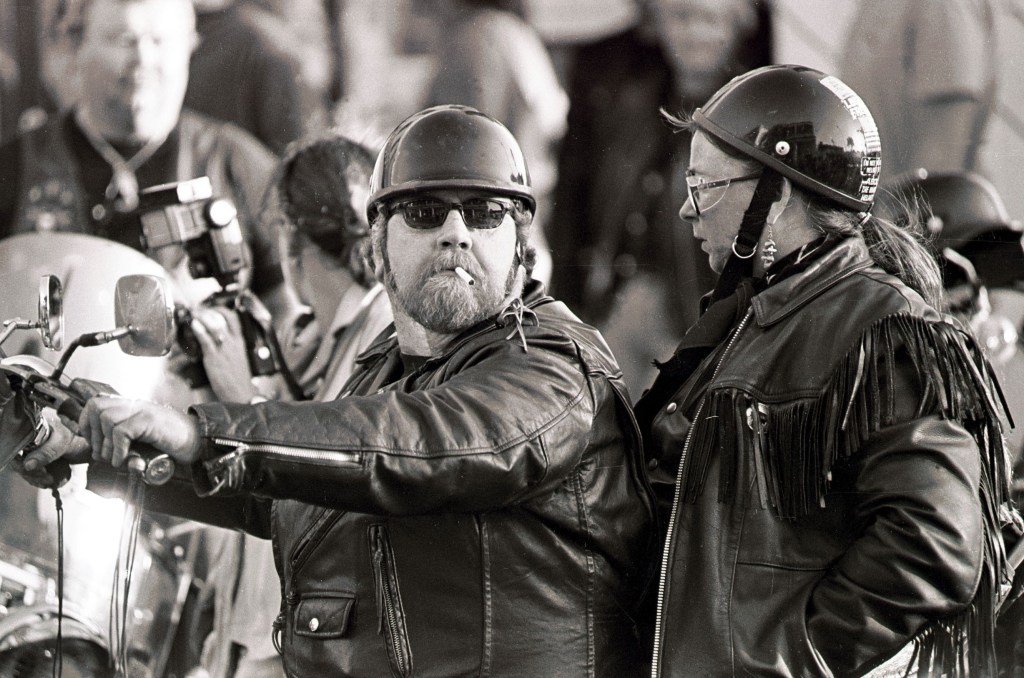
Why Do Bikers Wear Leather Jackets and Gear?
Whether you ride on pavement or go off-road, proper motorcycle safety gear is a necessity. And that doesn’t just stop at a quality helmet, either. Gloves, boots, jackets, and pants are all part of the ensemble. And besides helmets, few things are as closely tied to the biker image than the leather motorcycle jacket. But why is it, despite modern advances in materials, that the leather motorcycle jacket is still so popular?
A brief history of the leather motorcycle jacket
The iconic black leather motorcycle jacket is older than many realize. Bearing a close resemblance to the leather overcoats and bomber jackets worn in WWII, it was popularized in the 1950s and 60s. Especially after Marlon Brando wore one in The Wild One.
But the first leather motorcycle jacket actually dates back to the 1920s, Motorcyclist reports. It’s the creation of New York native Irving Schott, who made raincoats and rode motorcycles. He and his brother were the first to put a zipper on a jacket in 1925. But Schott had a problem: none of the coats available at the time were suited to motorcycle riding. Contemporary leather jackets didn’t have the right fit, and they wouldn’t stay closed in brisk winds.
So, in 1928, Schott combined a diagonal zipper with a tighter-fit leather jacket to create the Perfecto. And the Schott NYC company still makes it to this day.

But why make motorcycle jackets out of leather? And why do so many come in black? As Cycle World explains, it’s a matter of practicality and safety. Black doesn’t show stains from oil or dirt. The leather itself is windproof and can be lined for additional warmth. But perhaps most importantly, leather is significantly better at resisting abrasion than wool, cotton, or the typical denim fabric. So, if a biker does go down, the jacket protects their skin.
Is leather still the best material for motorcycle jackets?
The leather motorcycle jacket has evolved quite a bit over the decades, Cycle World reports. It’s possible to get ones with pockets for armor, mesh venting, and female-specific fit. And when it comes to keeping the pavement from scraping you up, leather typically out-performs textiles, Motorcyclist reports.
However, when supplier Dainese released its Paris-Dakar-inspired gear collection, it featured both leather and textile jackets, Motorcyclist reports. And there are several good reasons for this, The Drive reports.
Firstly, even with perforations and mesh, leather doesn’t breathe nearly as well as a textile. So, over long rides, you’ll sweat more. Additionally, leather isn’t waterproof; indeed, repeated heavy showers can damage leather.
Textiles are also more flexible, New Touring Rider reports, especially since leather needs to be relatively thick to be truly abrasion-resistant. Plus, a motorcycle jacket made of leather is noticeably more expensive than a textile one, Revzilla reports.
Ultimately, choosing between a textile and a leather motorcycle jacket depends on your riding style, GQ, and Motorcycle Cruiser report. Leather ones are fine for cooler and rain-free days and nights, as well as short trips. But for touring in all kinds of weather, textiles are the better choice. Just make sure that, regardless of which material you pick, to get some armor to go with it.
What about for other gear?
Motorcycle jackets aren’t the only thing made out of leather. Gloves, boots, even pants, and racing suits are made from it, too. And often from different kinds of leather, Revzilla reports.
Goatskin, for example, is soft and supple, which is why it’s often used in gloves. Cowhide is the most common, but kangaroo leather is stronger. Top-grain leather is thinner than full-grain leather, but it’s cheaper and looks a bit better.
The same pros and cons between leather and textiles also apply to other motorcycling gear, too. But there’s one more thing to keep in mind: leather resists heat better than textiles. So, if you’re worried about accidentally melting your boot on the exhaust pipe, go with leather. And if you plan on racing, leather is basically a requirement, Cycle World reports.
Follow more updates from MotorBiscuit on our Facebook page.


